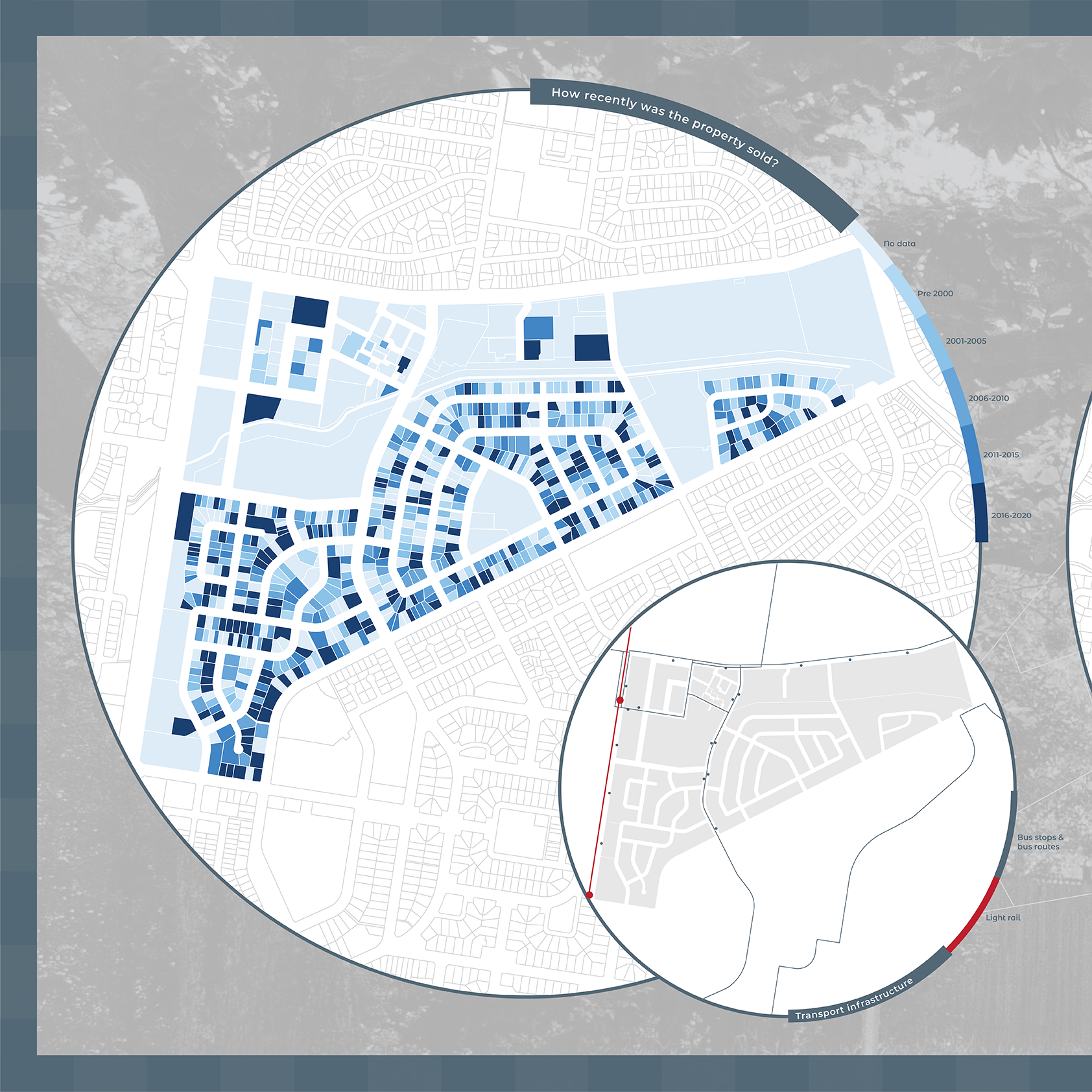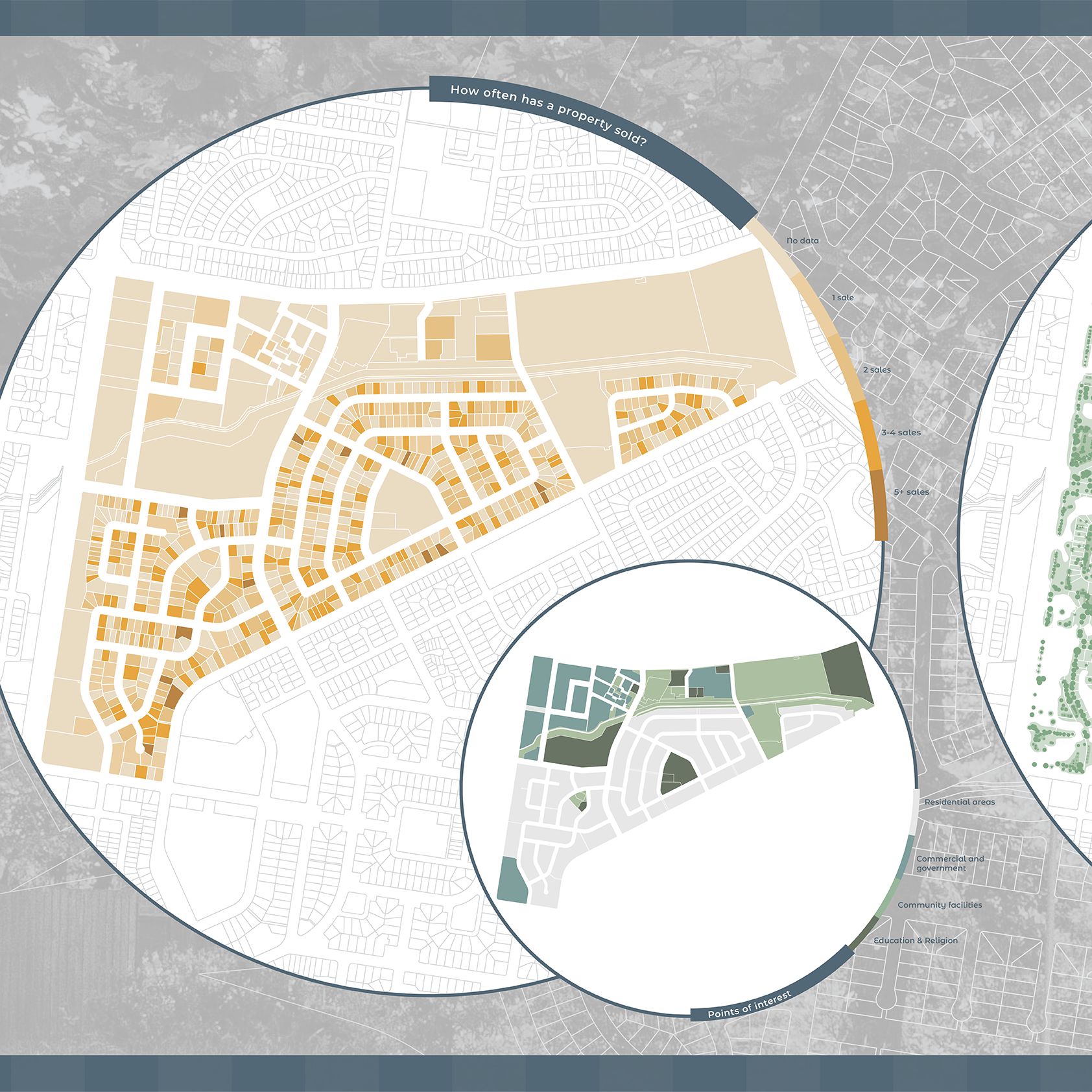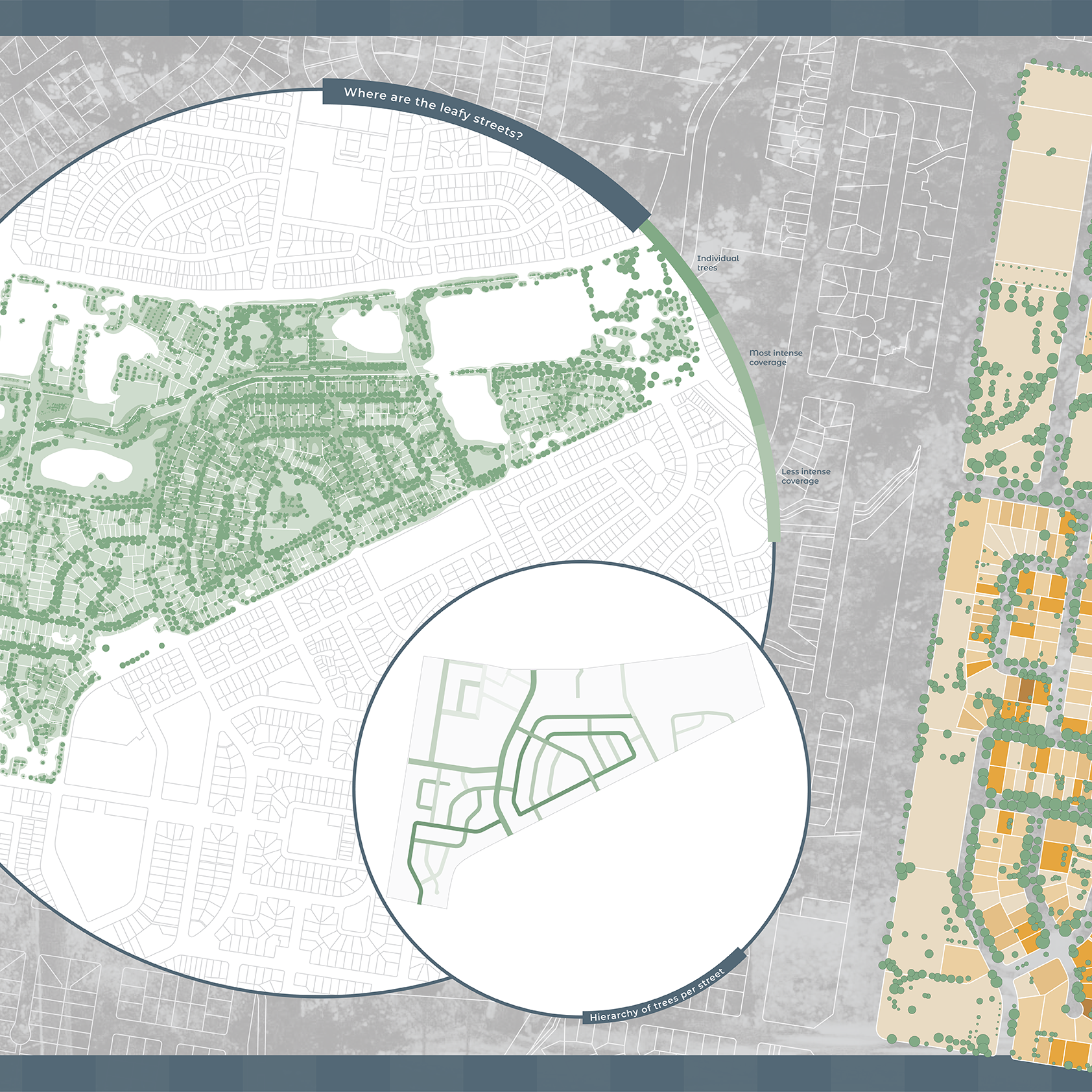Reporting from Suburbia explores Canberra’s inner north suburbs through the medium of mapping, especially focusing on the “intangible attitudes, behaviours and desires of the residents”.
We explored the leafy nature of these established suburbs and sought to understand whether they have any impact on the sales frequency of properties. The accompanying academic abstract is provided below.
In collaboration with Tom Woodthorpe.




A number of factors contribute to the desirability and liveability of a suburb. Of these, convenient access to public transport networks, key amenities such as educational facilities, shops, cafes and restaurants are valued (Wagner 2016). But can the number of trees in a suburb have an impact?
Dickson provides the community with many of these key amenities, elements that contribute to the overall desirability of the suburb. Trees are also desirable factors to consider when purchasing a property (Bellamy 2019). They hold an intangible element, as people denote social and personal values to them due to the peaceful and aesthetic environment they provide. We suggest that trees have an impact on tangible and intangible attributes, help establish a sense of community, and hence liveability within a suburb. With this is in mind, we sought to explore whether leafy streets affect how long people reside within a property, focusing on value not in financial terms, but in terms of intangible values through long ownership and low turnover rates.
Mapping residential sales information in terms of number of times a property has sold since the early 1990’s (1) and the year it was most recently sold, we observed that many properties in Dickson appear to the retained for significant lengths of time. Properties with one sale record accounted for 40 percent of the data.
By identifying every tree in Dickson using recent aerial imagery, we observed the dispersal of greenery within the suburb and identified the leafiest streets. In the quiet, suburban inner circle of Dickson, it appears leafier streets do indeed contribute to property retention. Overlaying tree data with sales frequency, we note properties in streets with established trees are retained longer and, in many cases, have not been sold since the early 2000’s or before. Streets with less greenery, by contrast, appear to have higher turnover.
Although it is recognised that multiple factors contribute to the liveability of Dickson, such as proximity to Canberra’s city centre, connection with transport including the light rail network, and Dickson’s own well-developed dining, shopping and commercial precincts, it is interesting to note that leafier streets appear to contribute to desirability. Quieter streets, those that typically have more trees, enhance liveability and attractiveness for long term occupancy. The maps suggest areas where the newest members of the community live, or in other terms, where people who have been in community longest live.
We also note sale dates reveal many properties have been sold in the last four-year period (2016-2020). This could be for a number of reasons, including generational change, or it could be related to properties increased financial value following the demolition of the Dickson Flats in early 2016, and Canberra’s light rail being completed in 2019. With direct and easy access to the city centre, and a major bus interchange connecting with many areas of Canberra, Dickson appears a highly desirable location.
Through mapping various data sets we identified that whilst there are multiple factors that contribute the liveability of suburb, the natural environment, and more specifically the established leafy trees, contribute to desirability of Dickson.
Through mapping various data sets we identified that whilst there are multiple factors that contribute the liveability of suburb, the natural environment, and more specifically the established leafy trees, contribute to desirability of Dickson.
(1) Noting that Dickson was established as a residential suburb in the early 1960’s (National Museum Australia).
References & Data Sources
ACTmapi (2020). January 2020 aerial photography [aerial imagery]. ACT Government. https://app.actmapi.act.gov.au/actmapi/index.html?viewer=ai
All Homes. (n.d.). Property and past sales information [web-based listings of property information]. All Homes. https://www.allhomes.com.au/ah/research/property-and-past-sales?localityId=14606&localityType=divisionIds&legalSs=&ss=dickson
Bellamy, S. (2019, March 22). Nearly 3 in 5 Australians would pay more to live on a leafy street. Lendi. https://www.lendi.com.au/inspire/insights/most-australians-would-pay-more-for-property-on-leafy-street/
National Museum Australia. (n.d.). Majura, Australian Capital Territory. https://www.nma.gov.au/explore/features/food-stories/places-objects/majura
Suburban Land Agency. (n.d.). Dickson flats – block 40 and 41 section 6. ACT Government. https://suburbanland.act.gov.au/en/dickson-flats-block-40-and-41-section-6
Transport Canberra. (2020, October). Routes by number. ACT Government. https://www.transport.act.gov.au/getting-around/timetables/routes-by-number
Wagner, I F. (2016, July 30). What makes a suburb liveable? The 16 factors that make or break a neighbourhood. Domain. https://www.domain.com.au/news/what-makes-a-suburb-liveable-the-16-factors-that-make-or-break-a-neighbourhood